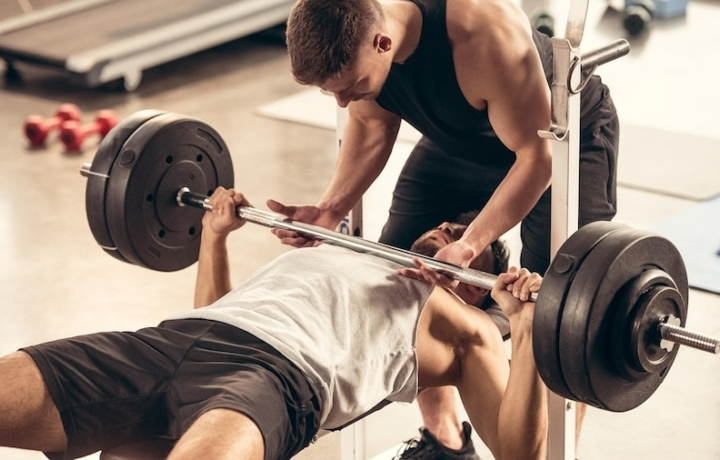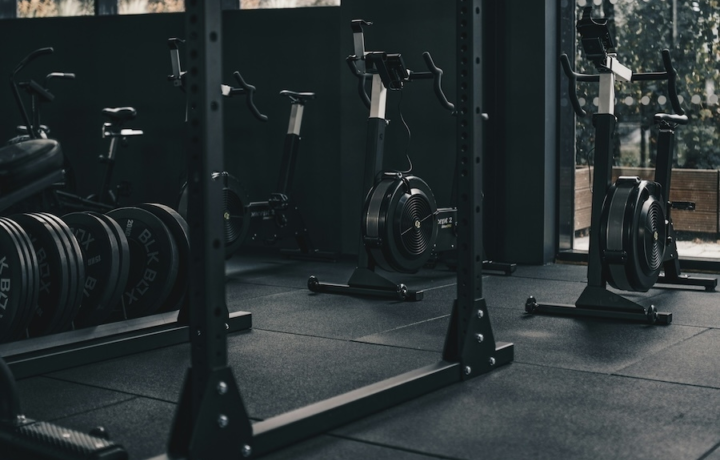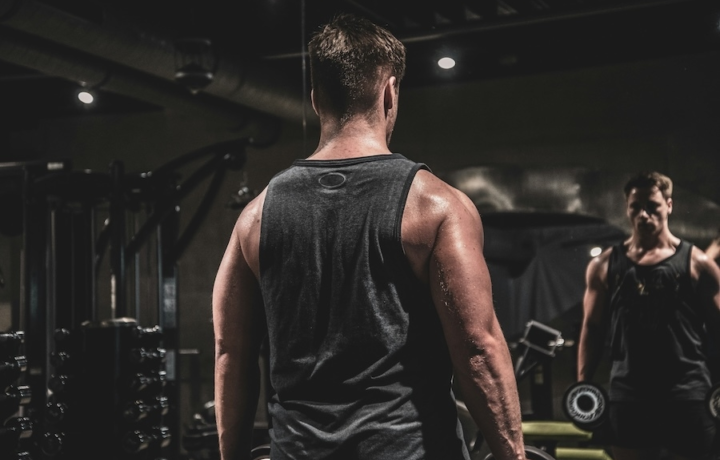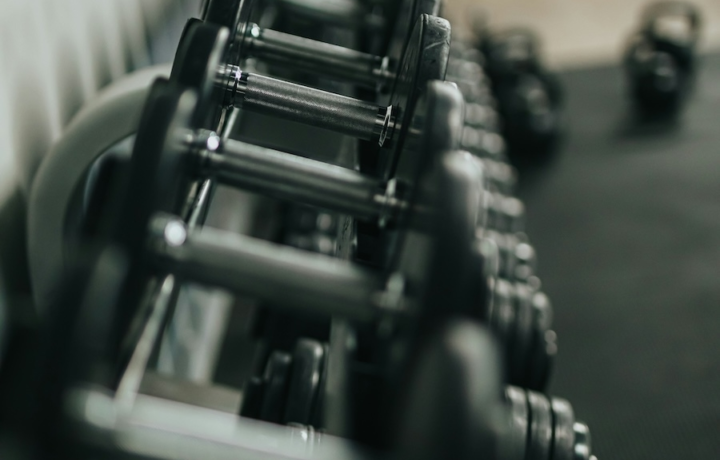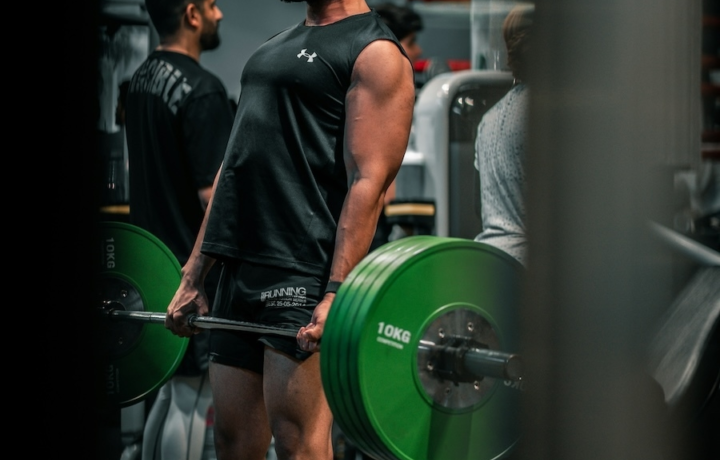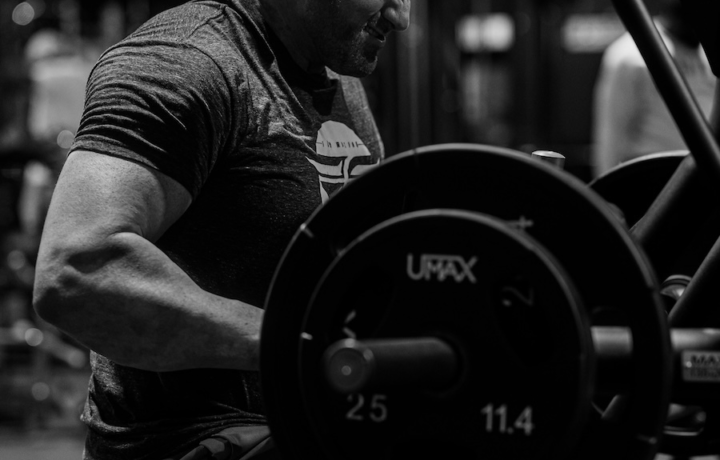Exercise
Dumbbell Lateral Raise

Dumbbell Lateral Raise
How to Perform
- Stand tall with your feet shoulder-width apart, holding a dumbbell in each hand by your sides with palms facing inward.
- Maintain a slight bend in your elbows (approximately 10-15 degrees) and keep this angle fixed throughout the movement.
- Brace your core and pull your shoulders down and back to establish a stable posture before beginning the lift.
- Exhale as you slowly raise both arms out to your sides until they reach shoulder level, keeping wrists neutral and thumbs slightly higher than pinkies.
- At the top position, your arms should form a T-shape with your torso, with dumbbells positioned slightly forward of your shoulders.
- Pause briefly at the top of the movement, focusing on the contraction in your middle deltoids.
- Inhale as you slowly lower the weights back to the starting position, maintaining control and resisting gravity.
- Keep your torso still throughout the entire exercise, avoiding the temptation to swing or use momentum to lift the weights.
Important information
- Choose a weight that allows you to maintain proper form—this is typically lighter than you might expect for a shoulder exercise.
- Keep your wrists in a neutral position throughout the movement to prevent strain.
- Don't raise your arms above shoulder height as this shifts tension away from the middle deltoids and can increase impingement risk.
- If you feel your traps engaging too much, focus on consciously drawing your shoulder blades down during the movement.

Dumbbell Lateral Raise
Exercise Details
Primary Muscles
Muscle Groups
Mechanic
Risk Areas
Built for progress
Take the guesswork out of training
Create personalized AI-powered workout plans that evolve with you. Train smarter, track every rep and keep moving forward, one workout at a time.






The dumbbell lateral raise stands as a fundamental isolation exercise for anyone looking to sculpt defined shoulders and enhance their upper body aesthetics. Perfect for beginners entering the fitness world, this movement specifically targets the side deltoids—those muscles responsible for giving shoulders that coveted rounded, capped appearance when developed properly.
As a cornerstone of bodybuilding routines for decades, lateral raises help create the visual illusion of a smaller waist by widening the shoulder silhouette. Their versatility extends beyond hypertrophy work, as they serve excellently as a warm-up movement to prepare the shoulder complex before tackling heavier pressing exercises. The controlled, deliberate nature of this exercise increases blood flow to the deltoid region while activating stabilizer muscles throughout the shoulder girdle.
While primarily known for muscle-building benefits, consistent performance of dumbbell lateral raises contributes significantly to functional strength development. The side deltoids play a crucial role in everyday activities requiring lateral arm movement and shoulder stability. Strengthening these muscles improves your capacity to lift objects away from your body and enhances overall shoulder health, potentially reducing injury risk during more demanding exercises.
For those pursuing strength goals, lateral raises complement compound shoulder movements by addressing potential muscle imbalances. The medial deltoids often lag behind the anterior (front) deltoids, which receive substantial stimulation during pressing exercises. By isolating the side delts, you ensure balanced shoulder development—critical for both aesthetic symmetry and optimal function.
The beauty of this exercise lies in its accessibility—requiring minimal equipment and space while delivering impressive results when performed consistently. Whether your fitness aspirations lean toward competitive bodybuilding or simply achieving a stronger, more capable physique for daily life, the dumbbell lateral raise deserves a permanent place in your training arsenal as a shoulder-sculpting essential.
FAQ - Dumbbell Lateral Raise
Dumbbell lateral raises primarily target the medial (side) deltoids, which give shoulders their rounded, capped appearance. They also engage the anterior deltoids, trapezius, and serratus anterior as secondary muscles during the movement.
Choose weights that allow you to perform 10-15 controlled repetitions with proper form—typically lighter than what you'd use for pressing movements. For most beginners, 5-15 pound dumbbells are appropriate, while more advanced lifters might use 15-30 pounds depending on training goals.
The three most common mistakes are swinging the weights using momentum, shrugging the shoulders up toward the ears, and raising the dumbbells too high (above shoulder level). Keep the movement controlled, shoulders depressed, and stop the upward motion when your arms are parallel to the floor.
Include lateral raises in your shoulder or upper body workouts 2-3 times per week with at least 48 hours between sessions targeting the same muscle group. For optimal shoulder development, perform 3-4 sets of 10-15 repetitions per session.
Yes, you can increase difficulty by adding a brief pause at the top of the movement, performing single-arm raises for greater focus, using resistance bands in addition to dumbbells, or trying seated lateral raises which eliminate the possibility of using lower body momentum.


